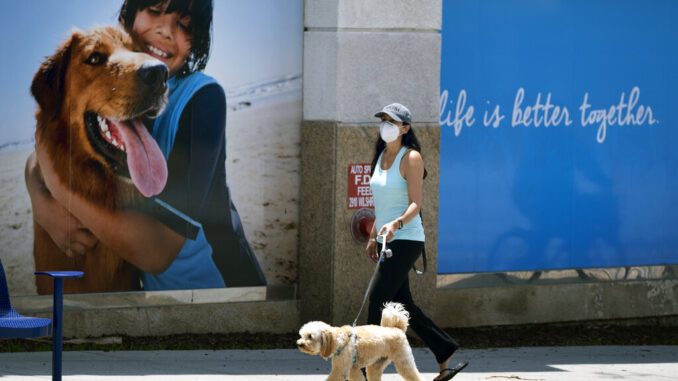
Last summer, like millions of Americans, I brought home a 7-pound ball of fluff. Over the past year, my mini-goldendoodle has turned into 23 pounds of pure joy.
Close to 1 in 5 households have acquired a dog or cat since the beginning of the COVID-19 pandemic, according to a recent survey from the ASPCA. That’s approximately 23 million American households.
And the majority of these pet owners don’t plan on rehoming their pet in the near future — contrary to buzz that people were returning pandemic puppies. That means our furry friends will be with us as we navigate the challenges (and financial obligations) of returning to the workplace and resuming daily routines.
Here’s what to know about affording a pandemic puppy — one year later.
JUMP INTO A ROUTINE
“Dog ownership is a journey,” says Brandi Hunter, vice president of public relations and communications at the American Kennel Club.
“For the last year, people have kind of gotten a different version of the journey. If you either bought a puppy or rescued one — or an adult dog — during the pandemic, you have a dog who is completely used to you being home for the most part.”
If you know you’re going back to the office in, say, September, begin adjusting your four-legged companion to a new routine in August, Hunter recommends.
Start by doing practice runs. This could be as simple as leaving the house for a few minutes at a time so your dog can get used to being away from you, says Nicole Ellis, certified professional dog trainer and pet lifestyle expert for Rover, a pet care marketplace.
You could also recruit help to keep your dog occupied and cared for while you’re away. Pet sitters can check on your dog, plus give refills of food and water. Doggy day care services provide interaction with other dogs. Dog walkers give your dog exercise.
GO FETCH A BUDGET
But adding expenses like dog walkers and pet sitters into your financial equation can be costly. (After all, you can expect to pay anywhere from $15 to $45 per walk, depending on where you live.)
Make arrangements that fit your budget. For example, hiring a dog walker who walks more than one dog at once can be more affordable than a solo walk. Taking your dog to doggy day care three days a week will be less expensive than five days.
Hunter also says to shop around for doggy day care, much like you would any service for humans. You may be able to find a lower rate if you’re willing to drive to a location outside your immediate area.
Rover and Wag are two examples of platforms that connect dog owners to dog walkers, boarders, sitters and more. Some even provide pictures and videos of your dog so you can see what’s going on throughout the day.
HARNESS YOUR SPENDING
Wading-back-into-the-world aside, you’ve probably already noticed over the past year that dogs are an investment.
I, for one, have placed more online orders for treats and toys than I can count.
“Pet owners can spend anywhere from a few hundred dollars up to several thousand within the first year of owning a new pet,” said Christa Chadwick, vice president of Shelter Services at the ASPCA, in an email.
So I also asked the experts how to save money on all sorts of dog essentials. Reducing costs in one or more of these areas can help offset the new expenses you’ll soon face.
— TOYS. If your tough chewer (like mine!) is going through toys like candy, Hunter says you can give them bones instead. Bones are meant to be chewed and last longer than plush toys. Another option? Mental stimulation games. Place a treat in a puzzle to keep your pup occupied for longer.
— TRAINING. Professional dog training can vary in price, so Ellis recommends checking out YouTube videos for trick training techniques you can implement at home.
— TREATS. Turn to the internet once again for at-home dog treat recipes. Ellis says you can mix kibble with treats to make the supplies last longer and get your dog excited about training.
— SUPPLIES. “Make friends in your community,” Ellis says. Sites like Nextdoor and Facebook Marketplace can facilitate supply swaps. You could score gear from people who want to give away things their dogs have outgrown.
— INSURANCE. “If the cost of an emergency veterinary visit or serious
illness would be a financial strain, consider investing in pet health insurance while your pet is healthy or saving money in a separate account specifically for these costs,” Chadwick said.
— EVERYTHING ELSE. Consider pet costs tied to human life events, Chadwick advises. For example, budget early before bringing your dog with you when traveling to hotels (for cleaning fees) or moving into some apartments (for pet deposit fees).


